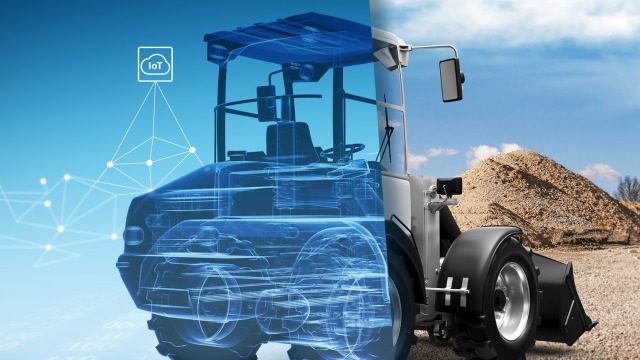



Telematics in construction and agricultural machines offers clear benefits for fleet management and service. What do off-highway players need “under the bonnet” and how future-proof are the various solutions?
As we all know, anyone who equips construction vehicles, agricultural and forestry machinery or mobile municipal vehicles with telematics cannot afford to make mistakes – especially when it comes to safety or functions. Technology and information streams must be consistent but also allow a high degree of design freedom and future viability – from data collection in the vehicle and device management to data management. Ideally, the solution should allow quick commissioning and be easily scalable so that the growing management outlay does not cancel out the benefits of the new business models. Here are a few tips which off-highway players should bear in mind when choosing a telematics solution for off-highway applications.
A telematics solution can only be efficient and allow sensible scaling if it takes into account the entire life cycle of the connectivity hardware – from preparation and commissioning to the operating phase and disposal. The device management system must provide optimum support for each individual phase. During operation, the device monitoring system also helps to keep track of large fleets, while mass management functions and tools for software and firmware updates minimize the administrative outlay. Other “must haves” include remote configuration and diagnostics as well as interfaces (APIs) for data exchange.
Find out more about the technology “under the bonnet”
In light of the range of functions required for reliable, safe and efficient operation, only a few off-highway manufacturers can realistically develop such a telematics solution themselves. Also a conglomerate made up of generic IoT modules is unlikely to succeed. After all, the telematics solution must allow administrators and service technicians to carry out a wide range of remote diagnostics procedures, parametrize domain controllers and other devices, transfer firmware and software updates over the air (FOTA / SOTA) or roll out new applications. Without the necessary domain knowledge in the areas of electronics and hydraulics, this is virtually impossible.
Transforming mobile machines – EXPLORE MORE
When selecting connectivity hardware, it is essential to avoid a technological lock-in owing to a proprietary telematics control unit (TCU). If the key hardware unit for collecting and transmitting vehicle data is “welded” to the operating system and applications, improved functional software cannot be migrated to new hardware easily later on. But this is necessary once or twice over the life of a vehicle so that the software would then have to be reprogrammed each time.
Whether or not device and data management are in separate systems is another indication as to whether a given telematics solution is well thought out. This pays dividends for many reasons – from usability, safety and data protection to lower cloud costs. It also gives the provider a groundbreaking choice: Either its own product and business strategy can be based on device connectivity and device management or both together plus data management are used as a complete solution from a single source. The second option has a major advantage, namely that the services including analysis and visualization can be made available on the market even more quickly. Bosch Rexroth proves that both options are available in a shared ecosystem with the Device Connectivity and All-in-one Connectivity BODAS Connect solutions.
Video about BODAS Connect – All-In-One Connectivity
Would you like to find out in detail how to connect off-highway machines efficiently and securely via the Internet of Things – without running into a technological dead end?
Download the white paper now!